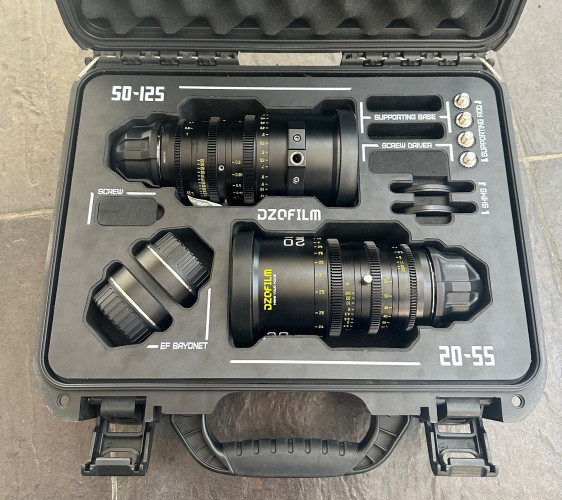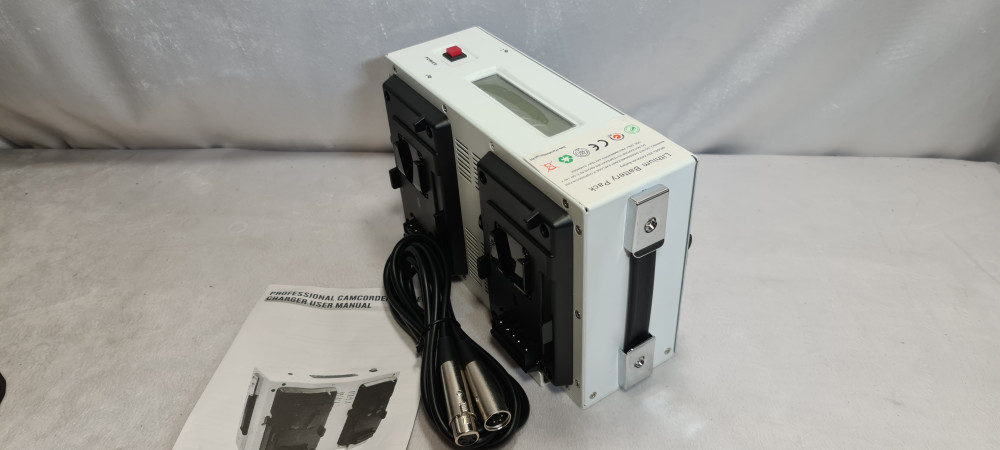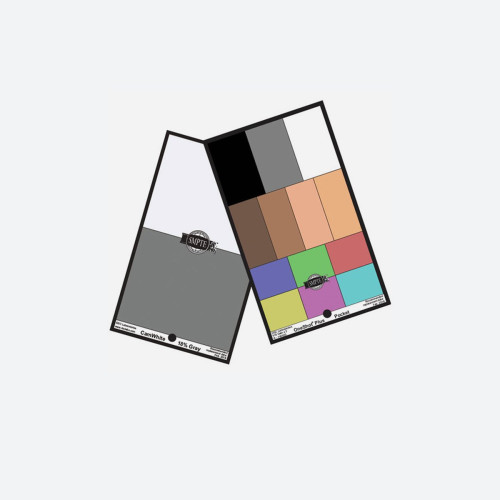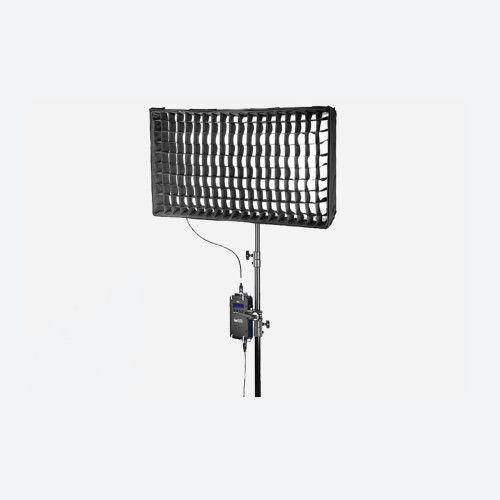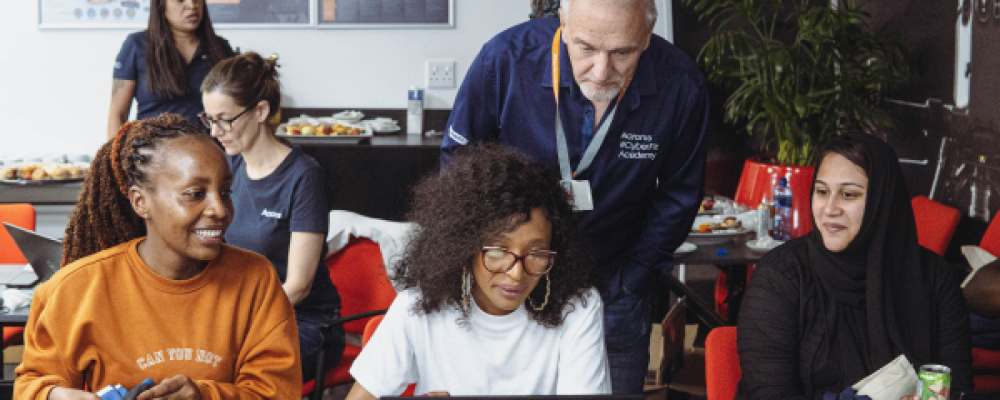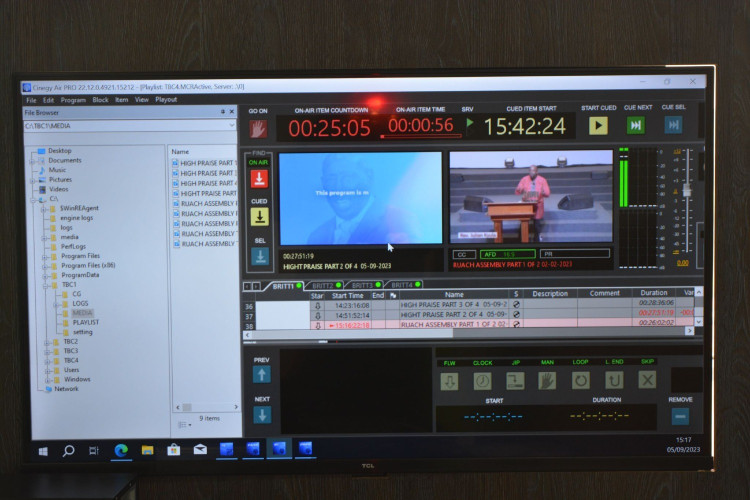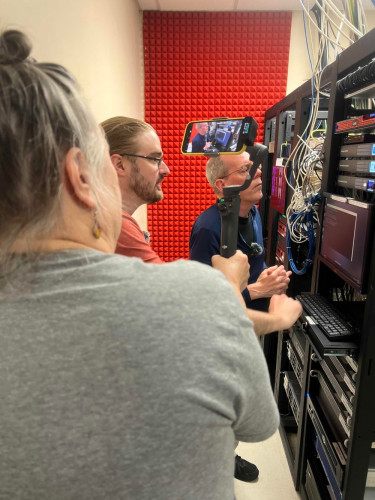What’s Cooking? is the new daily daytime TV show beamed from a temporary studio in the car park of a supermarket. As chefs prepare dishes live on air, a roving camera crew relays pictures from the aisles of the shop while Channel 4 viewers interact with the presenters and cooks via social media.
Produced by Superhero TV, technical integration and installation was undertaken by One-Ten Productions, with assistance of 3D Broadcast.
Featuring large windows, the purpose-built interactive studio suffers from ever-changing lighting conditions, a significant challenge for the technical teams. It is lit with a combination of LED fresnels and soft lights, as well as ambient light from outside. Peter Johnston of One-Ten comments:
“The British weather will always spring surprises. Over the course of an hour the contrast between the interior and exterior can change markedly; maintaining a consistent and natural look on screen is vital but is difficult to achieve against quickly changing lighting levels. The typical solution is to add polarizing film to the windows – it’s a good but very expensive option.”
Johnston’s experience with the alternative - in-camera electronic compensation techniques - was not positive. “With some systems the effect is unnatural and harsh. But on the advice of 3D Broadcast we trialled the Panasonic’s HPX3100 with its Dynamic Range Stretch function. The producers were very impressed with its ability to compensate for extreme levels of contrast and we quickly agreed to make the camera the main production tool.”
Paul Raeburn of Panasonic reseller 3D Broadcast, notes:
“The HPX3100 cameras are very good in themselves but the extra stops of latitude offered by the DRS is a godsend. Other camera systems can technically do the same, but usually there’s a price to pay in terms of mediocre looking pictures. We find that the Panasonic controls the levels well but does not compromise on the quality of the video. The result is great pictures in all conditions.”
Indeed, for Johnston the DRS look is so appealing that it is now constantly activated on the cameras, whatever the lighting conditions.
The four HPX3100 units are mounted on inexpensive Libec LS-100 pedestals and an EZFX jib for a professional studio feel. The cameras are supplied with a camera control unit which manages video signals and centralized control from the vision desk.
Jill Keane from Panasonic’s distributor, Holdan notes: “Dedicated system cameras such as the new HC3800 will have a slight edge in terms of studio ergonomics and signal processing but snapping a studio adaptor onto a Panasonic P2 ENG is not only cost-effective, but it also gives the crew options for shoulder-mounting the devices, either during the series or on subsequent shoots.”
The vision mixer at the heart of the production is Blackmagic Design’s Atem 2, supplied by RCB Logic with a Broadcast Panel. This HD switcher has 16 inputs which allows producers to play out multiple layers of graphics for dramatic creative effect. Its quality keying and multi-view output make the Atem 2 well suited for television use.
“As with all Blackmagic equipment, the Atem is phenomenal value for money and very reliable. I trust their products to form the backbone of the infrastructure: we have several SDI to fibre Mini Converters and digital to analogue converters in use, with all signals routed and managed by though their 40 x 40 3G Compact Videohub. It’s all robust, efficient, high quality kit.” Remarks Johnston.
The programme makes continual use of graphics – up-to 70 per edition. With live viewer interaction encouraged, the producer needs to create striking CG on the run. This is achieved with a virtual VTR which plays out alpha channel motion graphics created in real-time in After Effects. The signal is embedded cleanly by the switcher, adding a dynamic and informative element to the show.
For roving in-store reports, the production also employs a lightweight Panasonic HPX371, connected to the studio by radio link. Held on the shoulder and roaming up and down the aisles of the busy, working supermarket, the camera was selected because of its balance between size and quality. It’s for this reason that it’s one of the cameras employed by Associated Press video journalists around the world: weighing in at around 5kg including lens, it doesn’t slow the camera operator down and is relatively discreet.
Delivering the iconic camera angle, high above the working surface directly down onto preparation and cooking areas, Johnston installed a pair of Panasonic PTZ HD cameras. These HE60S systems are mounted to the ceiling with their 18x zoom lens, and pan and tilt mechanism allowing the producer to frame each shot accurately. The movement and image settings of the PTZ units are controlled in real-time at the production desk with the help of Panasonic’s low-cost 5-camera controller.
A month into the production, the technology is working well. Johnston concludes: “These days budgets are under constant pressure so at every point we have selected equipment that is reliable and broadcast spec, as well as being highly cost-effective. From the Blackmagic H.264 Pro Recorder that we use to record low resolution proxy files for instant review to the Mac Mini we use as a graphics server, the working partnership between One-Ten, 3D Broadcast, the distributor Holdan and the manufacturers has delivered a very effective television solution at a competitive price.”




